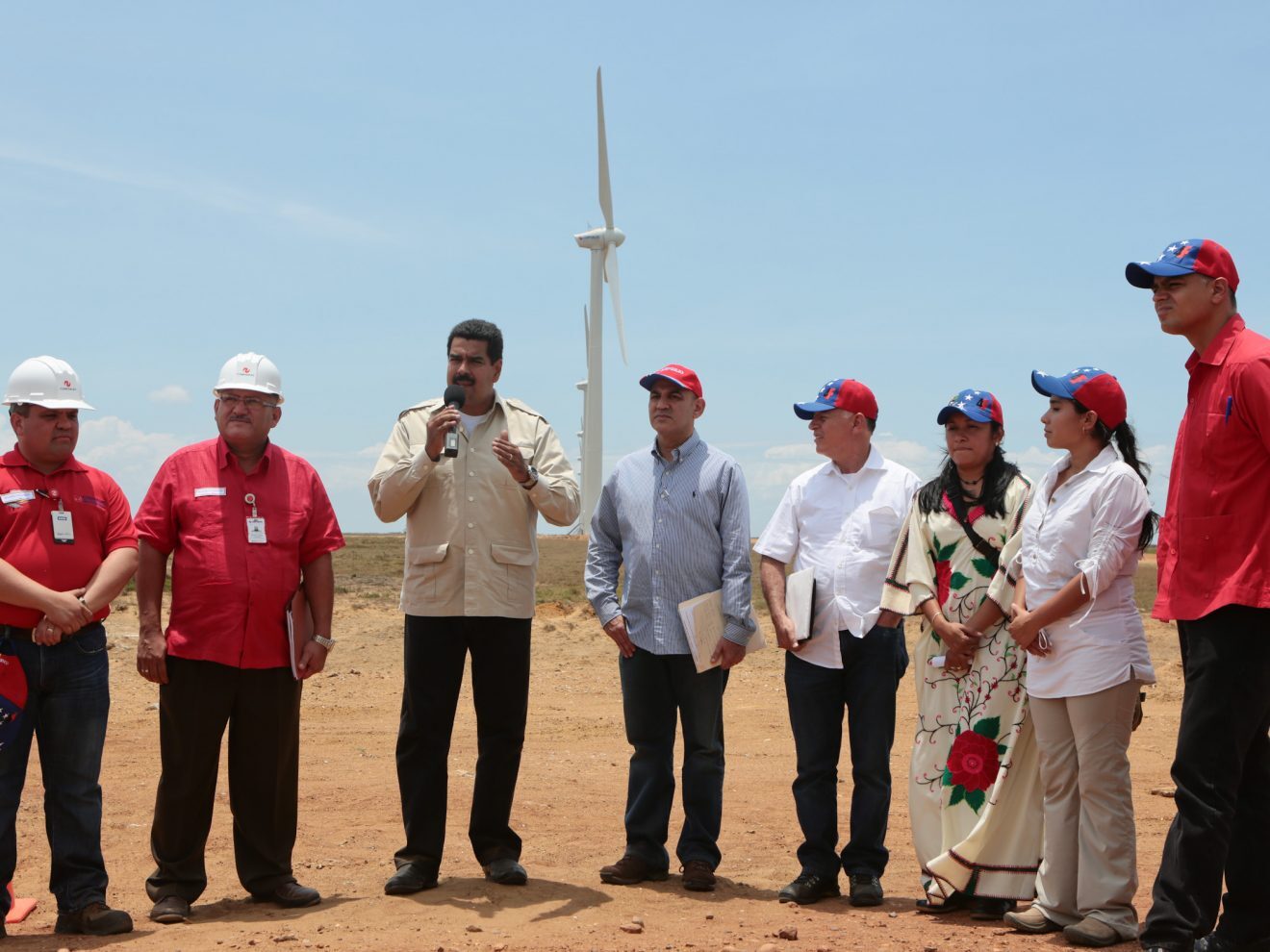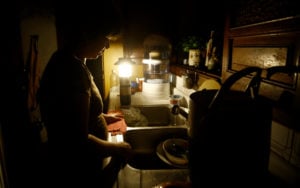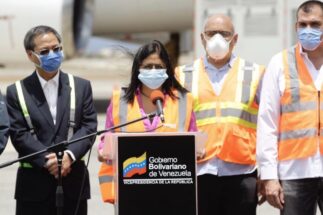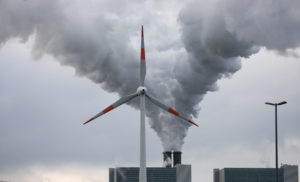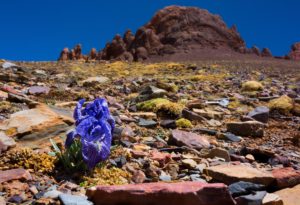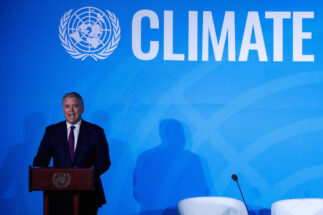Maracaibo is called ‘the land of the beloved sun’. Venezuela’s oil city par excellence, the epicentre of the country’s main source of income, is popularly known for its intense sunshine and high temperatures.
Even so, the capital of Zulia state, in the far west of the country on the border with northern Colombia, lives in the shadows. Its two million inhabitants often experience long days without electricity, which can range from four hours to several days and can rule out the use of air conditioning, communicating via phone or internet, or preserving perishable food.
This is despite the fact that in 1888 Maracaibo became the first Venezuelan city to have electricity and the second in Latin America after Buenos Aires, Argentina. It is currently surrounded by a dozen thermoelectric plants, as well as hundreds of oil wells and several coal mines.
Maracaibo also has a solar plant and an unused wind farm to the north, in the La Guajira region, evidence of Venezuela’s renewable energy paradox inasmuch as infrastructure does not necessarily mean an electricity supply in a country that has been immersed for years in a political, economic, humanitarian and now public health crisis.
24%
of Venezuela's power failures between April and September happened in Zulia
Amid the pandemic, 20,000 of the 84,000 nationwide power failures registered between April and September occurred in Zulia, according to the Committee of People Affected by Power Outages, an NGO that monitors the impacts of the electricity crisis.
At 70 years of age, Nirida Sanchez is living a restless life. The teacher, who refuses to retire, had her washing machine and microwave damaged by the blackouts at her home in Machiques de Perijá, a town near Maracaibo.
“I am a slave, because at any time when there is a downturn I have to run out and turn everything off so that I don’t damage another appliance. This is a worrying situation,” she says. For Sanchez, the unexpected failures and daily electricity suspensions between 6pm and 9pm are the most frustrating.
Venezuela’s renewables: Sowing light
There is great potential for clean energy generation in Venezuela, according to the solar and wind map produced by the Global Renewable Energy Atlas (IRENA).
High wind speeds of between eight and nine metres per second are frequent in many areas of the east, north-central, south and west of Venezuela. The country also has an average solar potential of 236 watts/m2, which is considerable given that the same map records 276 W/m2 in Chile’s Atacama Desert, the area with the greatest solar energy potential on the continent.
Venezuela’s potential for renewables exists across the whole country: from Margarita Island and the Paria Peninsula in the far east, through the densely populated centre-north and even reaching areas of the Andes mountain range and the south. But the highest numbers are in the most north-western states, such as Zulia and Falcón.
With this in mind, the government of former President Hugo Chávez designed the state programme Sembrando Luz (Sowing Light), initiating the installation of micro-networks of hybrid wind-solar systems, with diesel backups and emergency batteries. The systems were meant to serve thousands of remote rural communities.
The programme’s name comes from the mythical phrase “sowing oil”, attributed to writer Arturo Uslar Pietri, part of the “Latin American boom” generation of the 60s and 70s that included Gabriel García Márquez, Julio Cortázar and Mario Vargas Llosa. At that time, Uslar Pietri called for new oil revenues to be invested in diversifying the Venezuelan economy to avoid the vices of the rentier state. Chávez aimed to realise this when he commissioned the Foundation for the Development of the Electricity Service (Fundelec).
Sembrando Luz seemed to me an avant-garde project, very interesting, unique in Latin America
The programme, however, ended up being completely abandoned following the fall in oil prices, first in 2008 and then in 2014, according to the 2017 investigation Oil income and electrification in Venezuela: Historical analysis and transition towards sustainability by University of Zulia engineers.
This text reveals that between 2005 and 2009, the programme installed 850 photovoltaic systems of 1,200 and 3,840 watts in schools, health and community centres with internet access and border posts located in half a thousand isolated, indigenous and ‘criollo’ communities (non-indigenous communities in indigenous areas). The government also installed 30 and 60-watt panels in some 1,899 homes, as well as 294 water purification plants, pumps and desalination plants.
There were fewer achievements with hybrid systems. Only 18 of the proposed 300 were installed, each with the capacity to supply between 10 and 40 homes. Half are in Wayúu indigenous communities on the desert peninsula of La Guajira, four on the Paraguaná peninsula, two in the Andean state of Mérida, and three in the state of Sucre.
In theory, the programme served 202,000 people in 932 communities who were without power.
Sembrando Luz accelerated its pace, installing two thousand photovoltaic systems between 2009 and 2011 across the country. Then it began its decline. Over the following two years it reported barely 200 new systems, and only 50 by the end of 2013.
A harvest extinguished
Sembrando Luz also began the construction of two wind farms with an initial capacity of 25MW and 75MW in Paraguaná and La Guajira, respectively. It was later announced that they’d be capable of generating 100MW and 500MW.
“The Paraguaná Wind Farm will be the first to be inaugurated next year,” promised Chávez in November 2006. As happened with hydroelectric and thermoelectric plants, governors, mayors and ministers announced new inauguration dates that came and went. Four years later, national energy company Petróleos de Venezuela announced that it was beginning construction of the bases for the 24 wind turbines.
According to the magazine El Estímulo, this succession of dates, which were accompanied by contradictory figures on installed capacity and the number of wind turbines, also saw a change in the wind farm contractor. Spanish company Gamesa was initially hired but the contract was transferred to Argentina’s Impsa, which is also in charge of the La Guajira wind farm and is now defunct after declaring bankruptcy due to lack of payments from Venezuela.
In 2013, Jesse Chacón, who held various ministerial posts between 2004 and 2009, promised to solve the most urgent electricity problems within 100 days. He got the country excited about what he called “the Guri of wind” – a promise to generate 10,000MW from offshore wind, comparable to that produced by the Guri hydroelectric plant, which supplied 60% of Venezuela’s electricity.
That year, Venezuela registered its peak electricity demand with 18,696MW. Wind power was meant to solve supply problems that led to blackouts, which had hit the country since 2010.
With the fall in oil prices and the beginning of an economic recession that began six years ago, electricity demand fell to 10,948MW in 2019, according to the Venezuelan Association of Electrical and Mechanical Engineers (Aviem).
85%
of Venezuela's electricity supply comes from the Guri dam
This 41% reduction has not been covered despite investment from China as dozens of thermoelectric plants were never built due to the “electrical emergency” in the areas farthest from the Guri dam, which today accounts for 85% of the supply.
Ministry of Electrical Energy figures from 2014 state an installed generation capacity of 30,467MW, of which 14,879MW comes from hydro, 15,477MW from thermal and 50MW from wind There are 3,388 solar energy systems, eight isolated thermal and six micro hydro, that have a further 60MW installed.
Yet, the reality was very different. That same year, opposition deputy Julio Montoya visited the Paraguaná Wind Park, finding almost no wind turbines working. The blog La Quigua also published evidence of the park’s shutdown. Blackouts around the facility confirmed a lack of any electricity generation.
The last time the government of Nicolás Maduro said anything about this wind farm was in 2019, when it revealed that it was “recovering” 14 of the 30 wind turbines, without providing further details about the failures or thefts reported in the area.
Beyond this, two solar projects meant to incorporate panels bought from China lie abandoned.
One of them is located in Gran Roque, the largest island in the Los Roques Archipelago National Park in the Venezuelan Caribbean. The technology provider was Chinese company Yingli Green Energy, which announced that the 4,400 solar panels could generate 1.1MW and supply 400 homes.
But the project, completed in mid-2015, is not operational. Venezuela’s Political Ecology Observatory has questioned the contracting of unknown local firm Consorcio Energías Limpias Alternativas Venezolanas (Celav) and the purchase of equipment from the Spanish company Vico Export Solar Energy.
Ironically, Venezuela has had its own factory for solar panels and small wind turbines called Unidad de Energía Renovables Venezuela (Unerven) since 2013. Built in Paraguaná, near the abandoned wind farm, it received a visit in 2018 from Héctor Herrera Jiménez, then PDVSA’s director general of health, who died from covid-19 in September.

Gone with the wind
The La Guajira Wind Farm predicted better results. The project was assigned to the National Electric Corporation (Corpoelec), instead of the state oil company PDVSA, and managed to transmit its first megawatt in 2012 thanks to the construction of the substation and transmission lines, which never happened in Paraguaná.
Maduro even formally inaugurated it in April 2013, although internal Corpoelec documents published in an investigation by the newspaper Versión Final revealed that the facility had various faults, never generated more than 1.3MW, and only one of 12 wind turbines was operating. Officials from the Ministry of Electrical Energy recorded the faults when testing the installed machines, warned they should be stopped because of their poor condition.
The warnings were ignored and the park eventually stopped working. In 2018, then-Minister Luis Motta Domínguez, Chacón’s successor, who is now wanted by the US justice system for bribes related to the purchase of electrical equipment, admitted that “the park was completely stripped”. He claimed that four wind turbines could be recovered but the following year, three had been stolen despite military surveillance.
“Sembrando Luz seemed to me an avant-garde project, very interesting, unique in Latin America,” Alejandro López-González, co-author of research on the chronology of Venezuela’s renewables and a former Ministry of Electrical Energy official, told Diálogo Chino.
Now at the Polytechnic University of Catalonia, López-González has published nine articles on the abandonment of these promising solar projects and is now turning his attention to the failed wind farms. Beyond the governance, operational and financial problems, a mooted cause for the failure of these projects is that Venezuela feared the decline of the oil industry, its lifeblood.
But according to López-González, the Guri hydroelectric plant was built to save millions of litres of liquid fuel that could then be exported. He argues that taking the opportunity to cease to consume diesel and natural gas for domestic electricity generation would have enabled investment in wind and solar power capable of meeting 40% of Venezuela’s energy demand.
Estimates by the Miranda Scientific Institute, a Venezuelan state-run organisation based in Hungary that promoted the purchase of thousands of Hungarian-made solar panels that used Chinese technology, seem to support this view.
On their website, Venezuelan researchers based in Budapest estimated that if the country’s thermoelectric plants were to ditch the 2.513 billion litres of diesel, 9.832 billion cubic metres of natural gas and 840 million litres of fuel oil that Corpoelec said were used in 2017, it could save a total of $3.384 billion annually.
This figure would be equivalent to 11% of all oil exports declared in 2018 by the Central Bank of Venezuela, in an economy where oil revenues contribute 96% to the national budget.
This failure to reinvest oil proceeds means that despite living under a radiant sun, having abundant natural resources and being a past exporter of electricity to Colombia and Brazil, Zulia remains in the dark.
